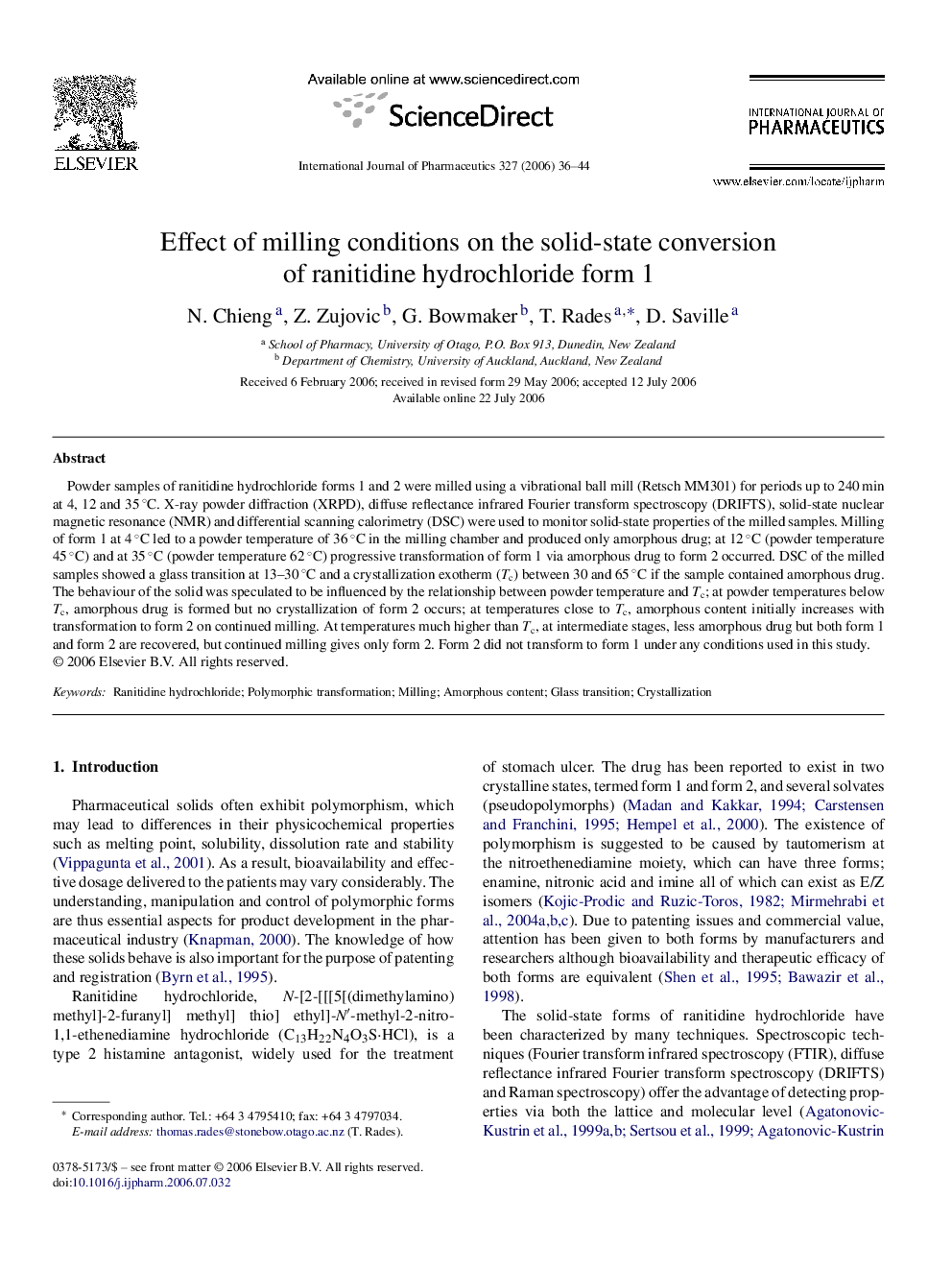| Article ID | Journal | Published Year | Pages | File Type |
|---|---|---|---|---|
| 2506488 | International Journal of Pharmaceutics | 2006 | 9 Pages |
Powder samples of ranitidine hydrochloride forms 1 and 2 were milled using a vibrational ball mill (Retsch MM301) for periods up to 240 min at 4, 12 and 35 °C. X-ray powder diffraction (XRPD), diffuse reflectance infrared Fourier transform spectroscopy (DRIFTS), solid-state nuclear magnetic resonance (NMR) and differential scanning calorimetry (DSC) were used to monitor solid-state properties of the milled samples. Milling of form 1 at 4 °C led to a powder temperature of 36 °C in the milling chamber and produced only amorphous drug; at 12 °C (powder temperature 45 °C) and at 35 °C (powder temperature 62 °C) progressive transformation of form 1 via amorphous drug to form 2 occurred. DSC of the milled samples showed a glass transition at 13–30 °C and a crystallization exotherm (Tc) between 30 and 65 °C if the sample contained amorphous drug. The behaviour of the solid was speculated to be influenced by the relationship between powder temperature and Tc; at powder temperatures below Tc, amorphous drug is formed but no crystallization of form 2 occurs; at temperatures close to Tc, amorphous content initially increases with transformation to form 2 on continued milling. At temperatures much higher than Tc, at intermediate stages, less amorphous drug but both form 1 and form 2 are recovered, but continued milling gives only form 2. Form 2 did not transform to form 1 under any conditions used in this study.
